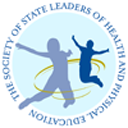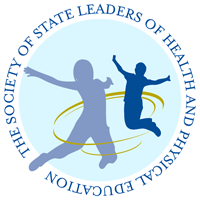- Home
- About us
|
Over the years, the Society actively participated with national organizations such as the Presidents Council and the National Association for Sport and Physical Education to support quality school physical education programs. In the early 1990s, the Society collaborated with other national organizations to develop National Standards for Physical Education and assisted in their dissemination to local school districts. The Society also participated in the development of the initial development of the Healthy People: Health Objectives for the Nation which included important goals for school physical education and health education. During the late 1980s and the 1990s, school health education positions in state departments of education increased substantially due to federally-funded programs created by the Drug Free Schools and Communities Act of 1986 administered by the U.S. Department of Education, and by the U.S. Centers for Disease Controls program for Comprehensive School Health Education to Prevent the Spread of HIV/AIDS and Other Important Health Problems Among School-age Youth. The Society's membership increased as a result of the additional positions. The Society provided a forum for these new leaders to learn, share, and grow professionally. The Society also contributed to national health education initiatives including the development of the Centers for Disease Control and Prevention Youth Risk Behavior Surveillance System, the National Health Education Standards published in 1995, and a state collaborative project to develop student assessment in health education. Additionally, the Society contributed to the writing of Health Is Academic: A Guide to Developing Coordinated School Health Programs, published in 1998. In 1997, the Society convened representatives of four national organizations and a federal agency to author a consensus statement regarding the use of available health education and physical education resources. The statement, Putting the Pieces Together, encouraged professionals to use national standards, guidelines, and assessment documents to implement quality school health education and physical education programs. In the first two decades of the 21st century, Society members worked with the Centers for Disease Control and Prevention on committees to develop and disseminate the documents: the School Health Index: A Self-Assessment and Planning Guide (SHI), the Physical Education Curriculum Analysis Tool (PECAT), and the Health Education Curriculum Analysis Tool (HECAT). Several members continue serving as trainers and workshop facilitators on each of these tools to promote healthy schools. Also, during that time frame, the Society developed the noteworthy documents Making the Connections: Health and Student Achievement, versions I and II. In 2010, the membership changed its name to the Society of State Leaders of Health and Physical Education to be more reflective of the education fields represented within state education and health departments and to be more inclusive of staff members with major responsibilities in the health, physical education, and fields identified in the coordinated school health program model and the Whole School, Whole Community, Whole Child Framework. The Society remains positioned to continue its leadership role to ensure that the nation’s children and youth receive the most effective education possible that will enable them to lead healthy, active, and productive lives. | Join us and give your career a boost!JOIN NOW |

 About The Society
About The Society














